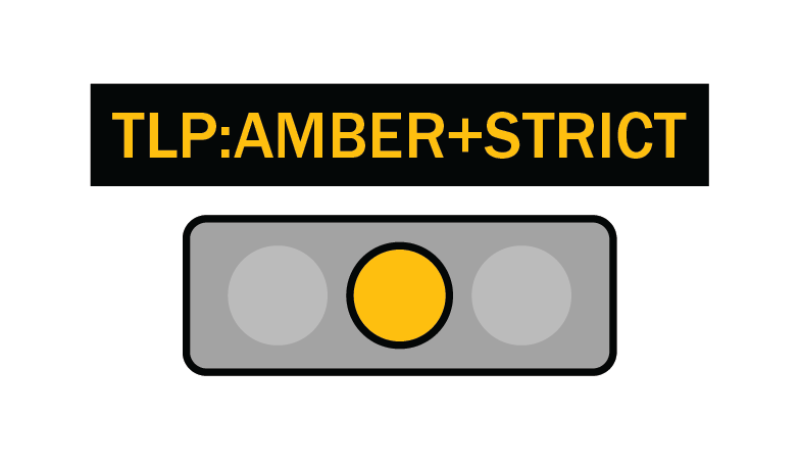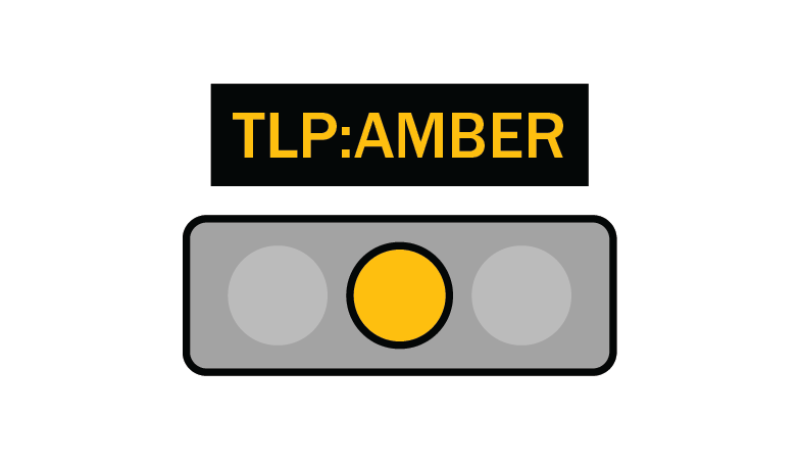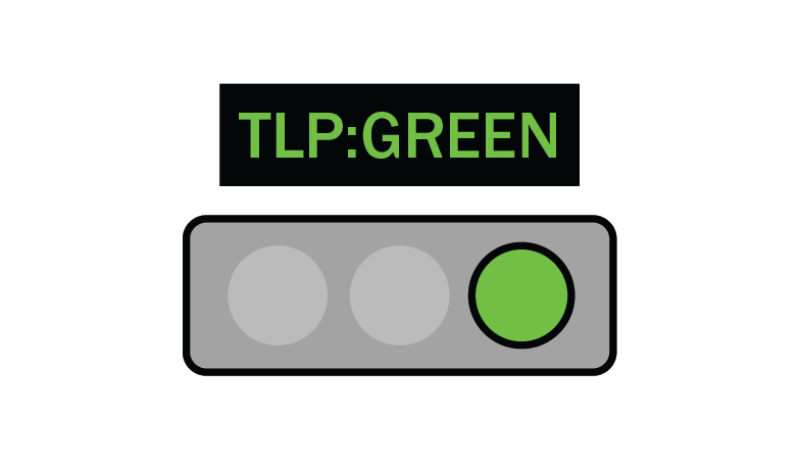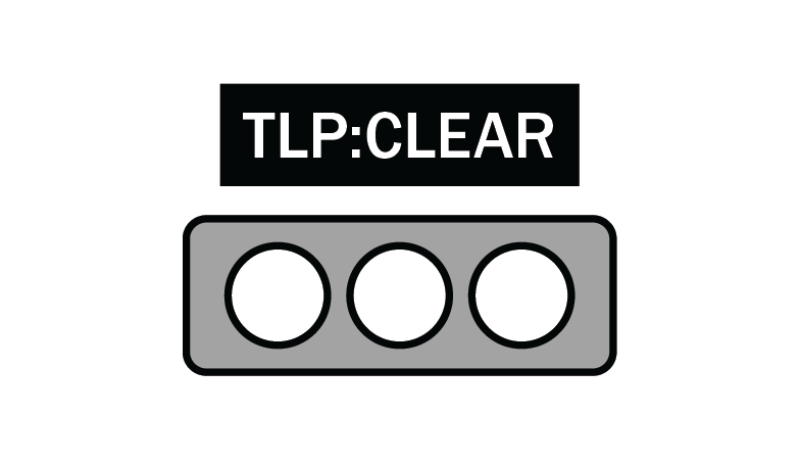TLP Media Labelling
The Traffic Light Protocol (TLP) was created in order to facilitate greater sharing of information. TLP is a set of designations used to ensure that sensitive information is shared with the appropriate audience. It employs four colors to indicate expected sharing boundaries to be applied by the recipient(s). TLP only has four colors; any designations not listed in this standard are not considered valid by FIRST.
TLP provides a simple and intuitive schema for indicating when and how sensitive information can be shared, facilitating more frequent and effective collaboration. TLP is not a "control marking" or classification scheme. TLP was not designed to handle licensing terms, handling and encryption rules, and restrictions on action or instrumentation of information. TLP labels and their definitions are not intended to have any effect on freedom of information or "sunshine" laws in any jurisdiction.
TLP is optimized for ease of adoption, human readability and person-to-person sharing; it may be used in automated sharing exchanges but is not optimized for that use.
TLP is distinct from the Chatham House Rule (when a meeting, or part thereof, is held under the Chatham House Rule, participants are free to use the information received, but neither the identity nor the affiliation of the speaker(s), nor that of any other participant, may be revealed.), but may be used in conjunction if it is deemed appropriate by participants in an information exchange.
The source is responsible for ensuring that recipients of TLP information understand and can follow TLP sharing guidance.
If a recipient needs to share the information more widely than indicated by the original TLP designation, they must obtain explicit permission from the original source.
Definitions

TLP: Red
Not for disclosure, restricted to participants only.

TLP: Amber+Strict
Limited disclosure, restricted to participants’ organization.

TLP: Amber
Limited disclosure, restricted to participants’ organization and its clients (see Terminology Definitions).

TLP: Green
Limited disclosure, restricted to the community.

TLP: Clear
Disclosure is not limited.
TLP:Red
When should it be used? Sources may use TLP:RED when information cannot be effectively acted upon without significant risk for the privacy, reputation, or operations of the organizations involved. For the eyes and ears of individual recipients only, no further.
How should it be shared? Recipients may not share TLP:RED information with any parties outside of the specific exchange, meeting, or conversation in which it was originally disclosed. In the context of a meeting, for example, TLP:RED information is limited to those present at the meeting. In most circumstances, TLP:RED should be exchanged verbally or in person.
TLP:Amber+Strict
When should it be used? Sources may use TLP:AMBER+STRICT when information requires support to be effectively acted upon, yet carries risk to privacy, reputation, or operations if shared outside of the organization.
How should it be shared? Recipients may share TLP:AMBER+STRICT information only with members of their own organization on a need-to-know basis to protect their organization and prevent further harm.
TLP:Amber
When should it be used? Sources may use TLP:AMBER when information requires support to be effectively acted upon, yet carries risk to privacy, reputation, or operations if shared outside of the organizations involved. Note that TLP:AMBER+STRICT should be used to restrict sharing to the recipient organization only.
How should it be shared? Recipients may share TLP:AMBER information with members of their own organization and its clients on a need-to-know basis to protect their organization and its clients and prevent further harm.
TLP:Green
When should it be used? Sources may use TLP:GREEN when information is useful to increase awareness within their wider community.
How should it be shared? Recipients may share TLP:GREEN information with peers and partner organizations within their community, but not via publicly accessible channels. Unless otherwise specified, TLP:GREEN information may not be shared outside of the cybersecurity or cyber defense community.
TLP:Clear
When should it be used? Sources may use TLP:CLEAR when information carries minimal or no foreseeable risk of misuse, in accordance with applicable rules and procedures for public release.
How should it be shared? Recipients may share this information without restriction. Information is subject to standard copyright rules.